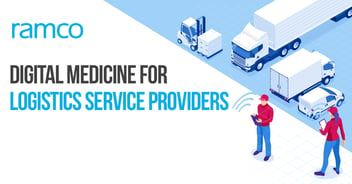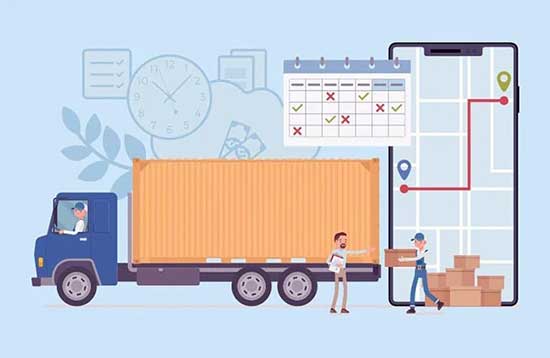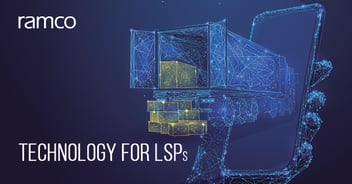

"The best way to predict your future is to create it "
Abraham Lincoln
This blog series took you through the changing realities of the logistics landscape. With technology, business models, and operational transformations disrupting the entire ecosystem, the biggest fear that all the logistics stakeholders are grappling with is VUCA – volatility, uncertainty, complexity, and ambiguity. Succeeding in the VUCA era requires a smart approach that can scale all these challenges to welcome change. You’ll need a robust package that gives you a competitive advantage, no matter what the industry’s measure of success is. That’s definitely not an easy goal to reach, especially since in this era, today’s innovation easily becomes tomorrow’s painfully incompetent legacy system.
So, how do you overpower the perennially changing measures of success in the logistics landscape? How do you retain your profitability and continue to grow in this dynamic ecosystem? The answers are not easy, but our blog series did find some solutions. Let’s go through these points quickly once again to build a strong and scalable strategy to meet the VUCA era in logistics.
Intelligent technology
Smart technology holds enormous promise for the logistics industry. The current focus of the industry is in winning the last mile battle, with logistics service providers going the extra mile experimenting with technologies such as drones for faster and efficient deliveries. Other innovations focus on leveraging intelligent automation with artificial intelligence, machine learning, augmented reality, and other futuristic technologies to improve functionalities at every node of the logistics network.
These innovations are scalable, have immense scope of evolving into brilliant solutions, and are easily customizable. These intelligent solutions have the power of replacing humans for routine and simple tasks; for example, sorting and picking at warehouses or part management in MRO. Similarly, blockchain technology allays concern about security in this networked approach of logistics operations. This technology has the potential of exponentially increasing the efficiency of the entire supply chain, with its permission-based, single data version approach. Blockchain minimizes scope for error and drastically improves turnaround time, two of the most desirable outcomes in the logistics landscape. Platform-based technologies support extensive collaborations across the logistics ecosystem seamlessly integrating separate systems and sharing relevant data in real time.
The 360-degree visibility, security, flexibility, efficiency, and time and cost savings that these technologies can deliver is incredible.
Streamlining operations
Any brilliant technology makes sense only when supported by streamlined operations. However, ever-changing landscape requirements and a perennially competitive environment place a lot of pressure on logistics organizations. Today’s logistics world is global, with people from across geographies working from multiple time zones. Hence, today’s organizational approach also includes this wide gamut of variance in work culture, practices, time zones, and currencies. An open work culture promoting quick thinking, innovation, and creativity has taken the front seat, where team spirit and easy access to work have become focus areas.
Another critical need of the hour is to control costs. Organizations are now examining processes and resources minutely to determine appendages that can be eliminated to focus on critical responsibilities. Asset and talent management have gained prominence, with organizations willing to invest in both these resources for staying ahead of competition.
Unique business models
The ecosystem is experimenting with different business models, welcoming new players, mergers and acquisitions, and interesting shifts in equations between customers and LSPs.
Mergers and acquisitions (M&A)
The landscape has realized the power of staying together. Gaining a competitive edge in this era requires multiple capabilities; hence M&A is a smart move that many organizations make to consolidate their strengths. This move often comes after in-depth market research of competitors, especially new comers who focus on niche technologies. Any organization with the potential of adding value to the existing network and building efficiency is deemed the perfect candidate. Hence making the right move at the right time can bring in incredible rewards. Fedex’s acquisition of P2P Mailing to meet its last-mile delivery challenges and UPS acquiring a leading organization providing services related to global trade compliance are just a few examples of the innumerable M&As happening in this industry.
M&As are proof of the power of the new players in the logistics game. The keywords for success in this category are unique concept, brilliant technology, interesting business models, and niche areas of focus. Most of these new entrants focus on niche areas within logistics, such as last-mile delivery, robotics, freight forwarding solutions, providing analytics-based visibility across the network, and blockchain technology. For example, Flexport, a start-up focusing on digitizing all the paperwork associated with freight forwarding, has grabbed the attention of the entire landscape. Similarly, Fetch Robotics has been creating waves in the logistics sector with its technology-driven bots and robotic solutions revolutionizing warehouse managements. These start-ups are the constant focus of logistics giants for potential M&A; hence they bring in a lot of scope for collaboration.
Customers turning into competitors
The e-commerce explosion has challenged the logistics industry way beyond everyone’s expectations. With delivery and resource challenges being the most crippling hurdles, logistics customers are also now jumping into the fray. E-commerce giants like Amazon, Target, and Home Depot are expanding their reach into logistics in an attempt to become self-sufficient. With approaches varying from developing their own delivery services to acquiring logistics and transportation companies, these giants are doing everything they can to untie the last-mile and on-demand delivery knots.
Collaborative approach
The concept of physical internet is a reiteration of the need for collaboration in the logistics industry. We’ve reviewed this concept in detail in our earlier blog posts. The idea of creating a well-connected global network of logistics partners and competitors who share their technology, physical assets, business models, and operational efficiencies is indeed the perfect solution to beat the transportation hurdles challenging the industry. Of course, realizing this brilliant concept will take a long time and will require sacrificing a lot of preconceived notions about collaborative convergence of capabilities.
Focus on overcoming VUCA at a granular level
The logistics industry is bound to be influenced by the four core disrupting elements of VUCA – volatility, uncertainty, complexity, and ambiguity. You have the choice of packing your bags or overcoming the challenges. Once you have decided to battle it out, make sure that this spirit spreads across the DNA of your organization. There’s an entire gamut of solutions that you can adopt, from focusing on niche areas and specific solutions to collaborative approaches that leverage specific strong points. Strong relationships, innovative technology, fostering talent, and focusing on your customers will help you stay ahead of competition. But the first step toward this goal must be from your end. So, what’s your decision going to be?


